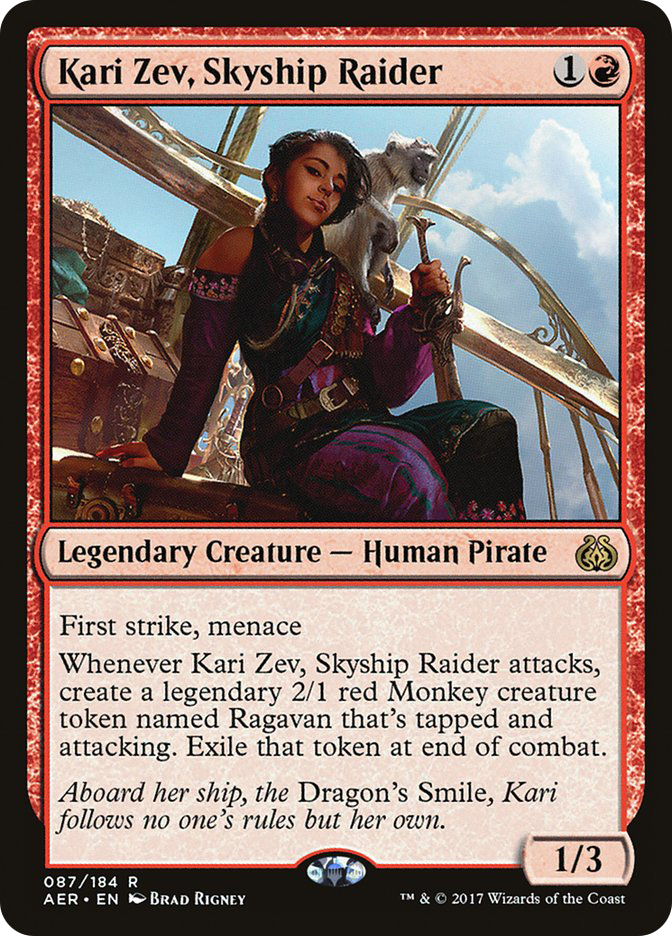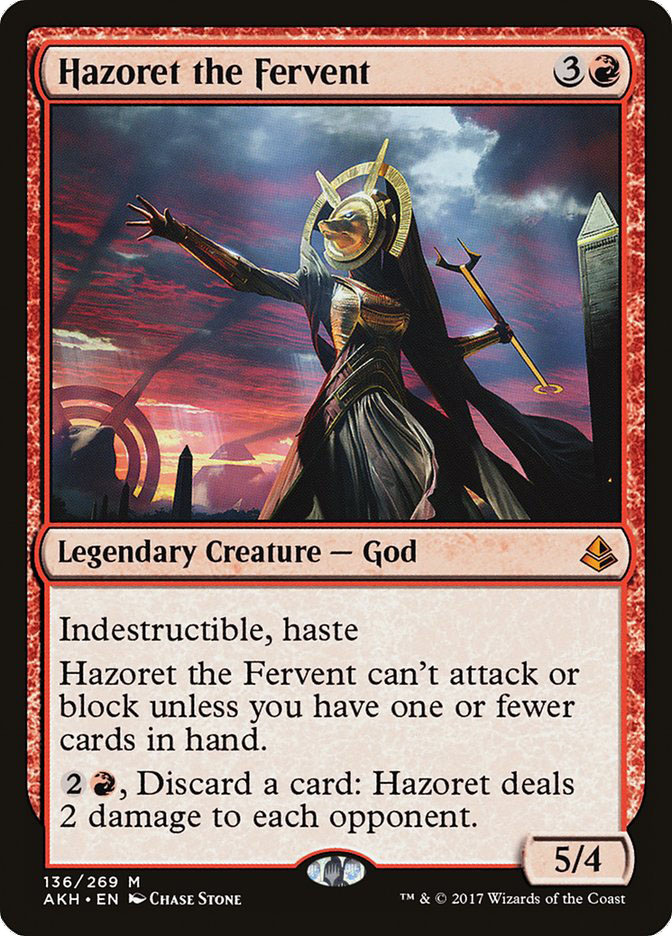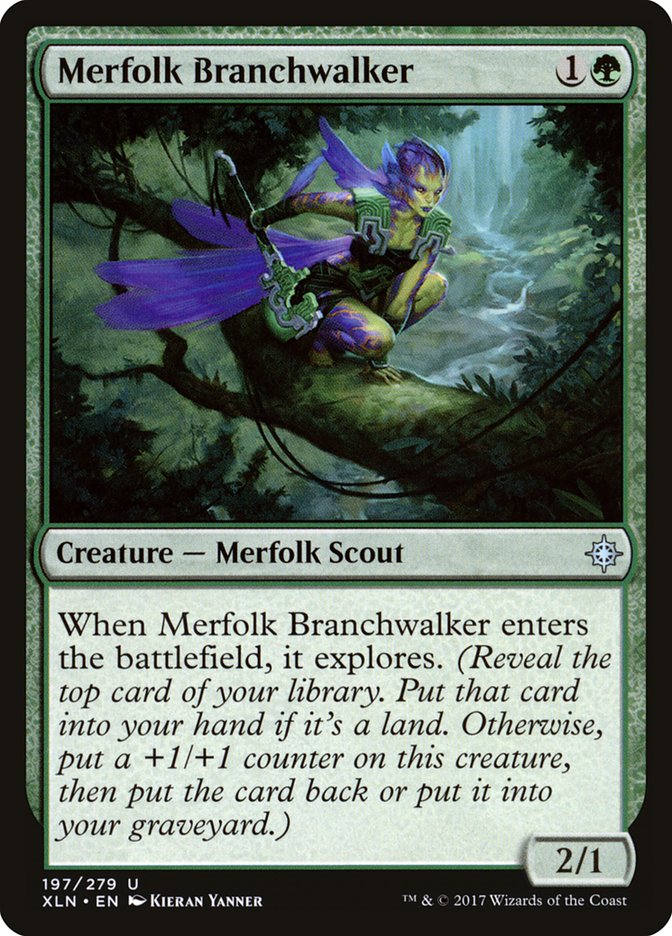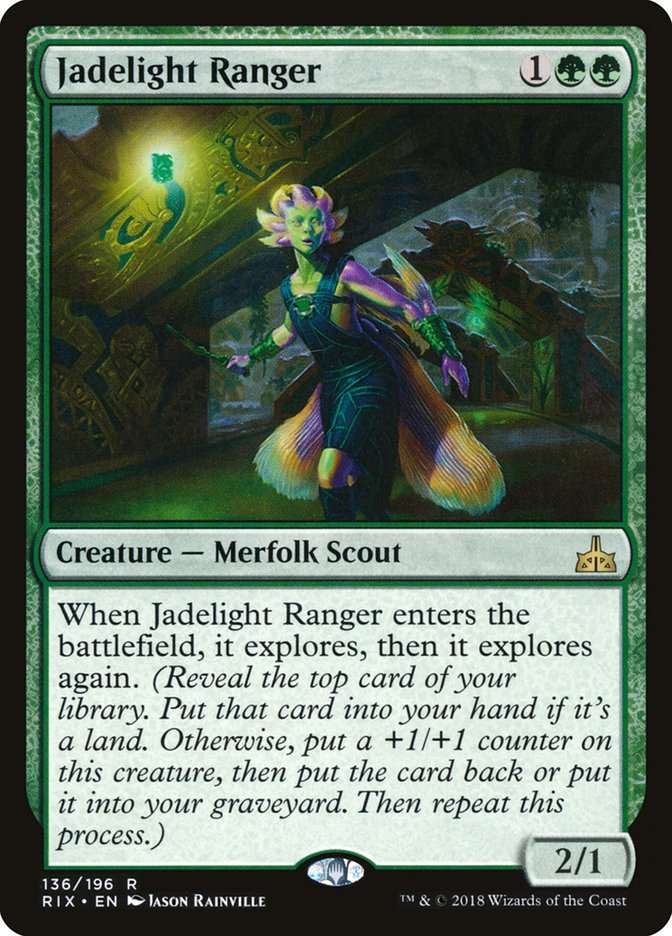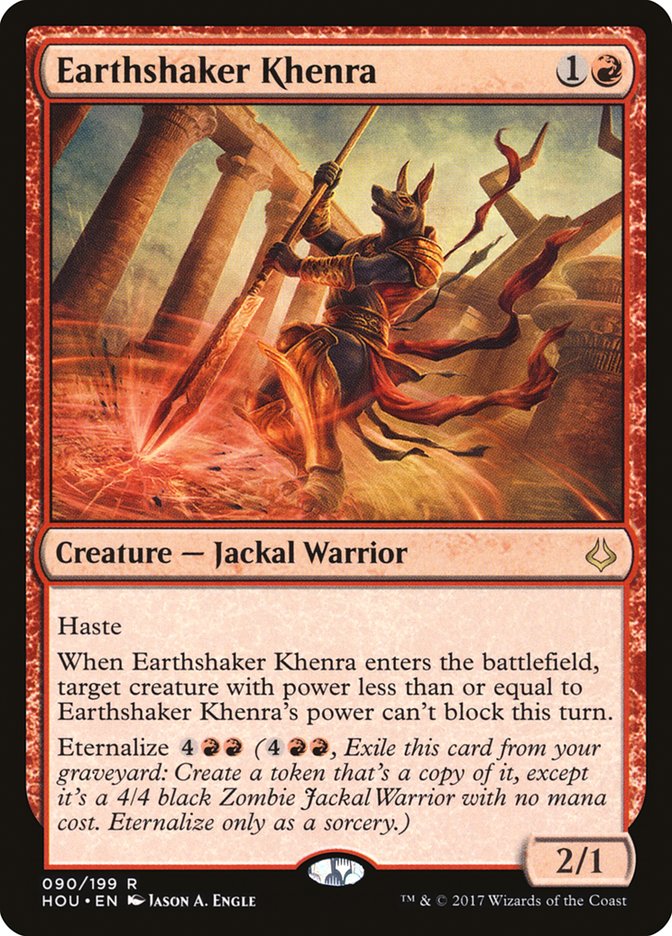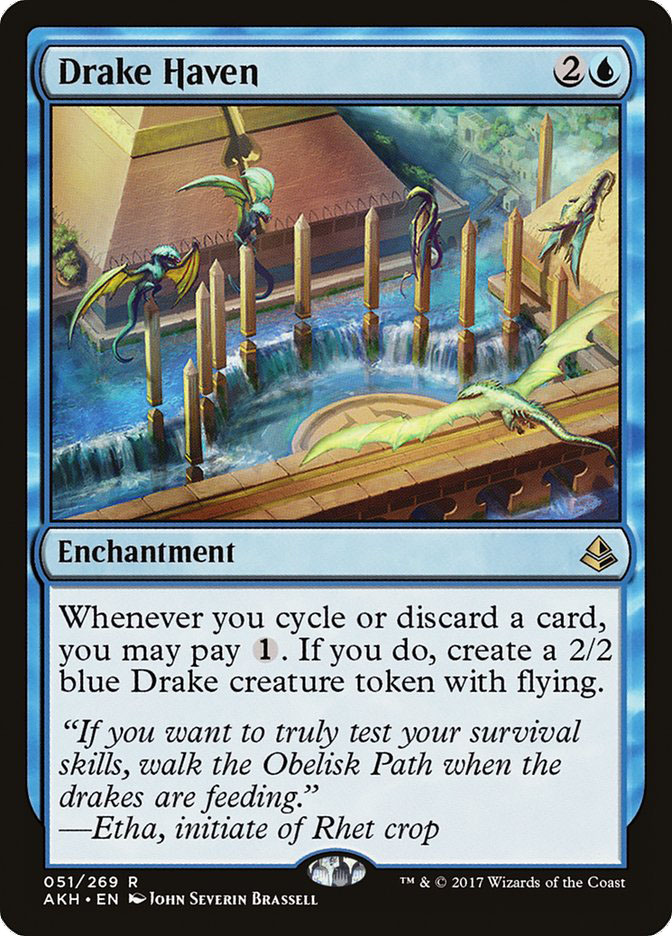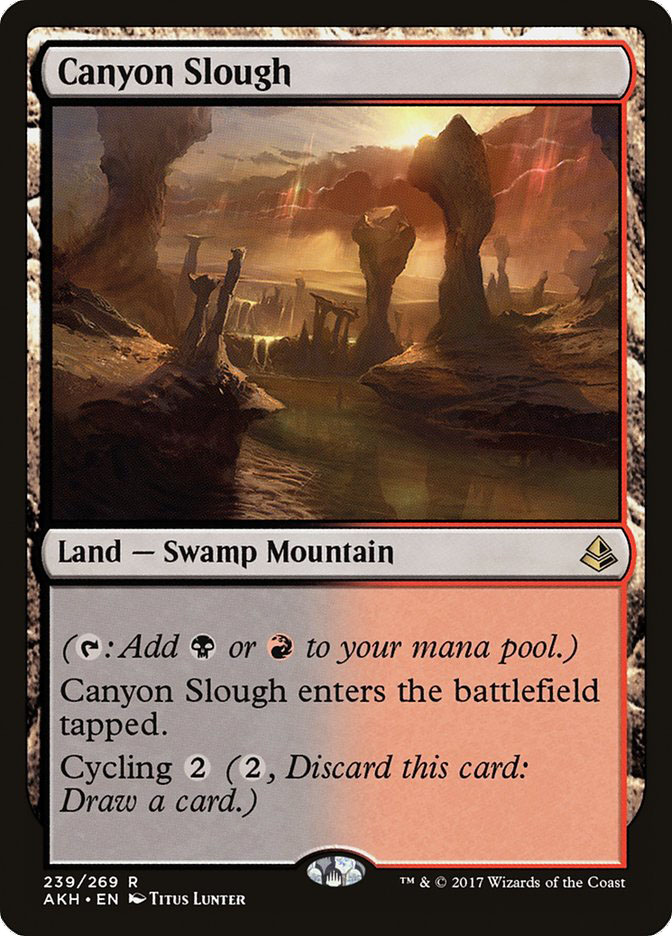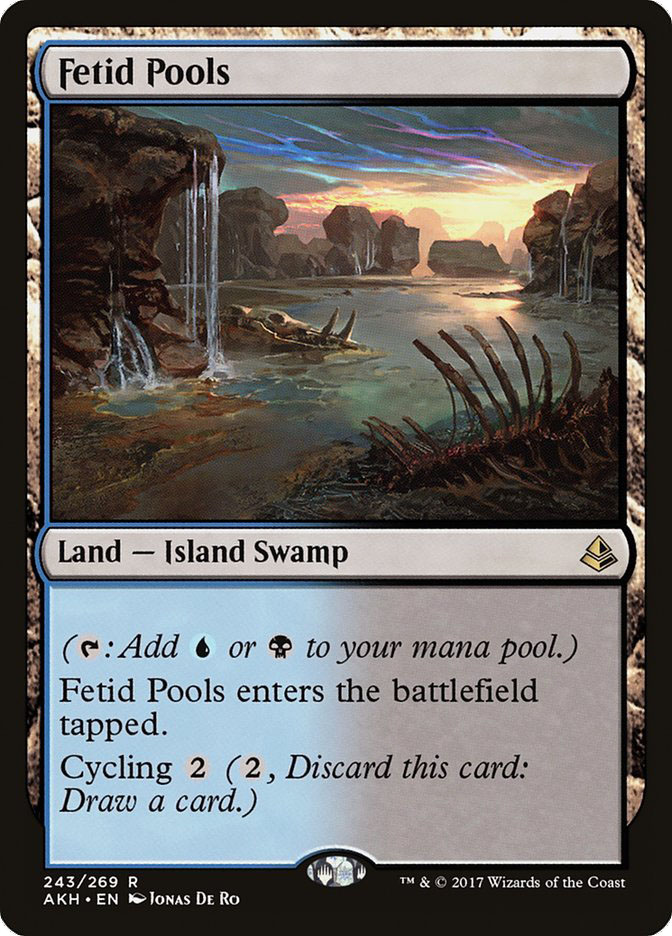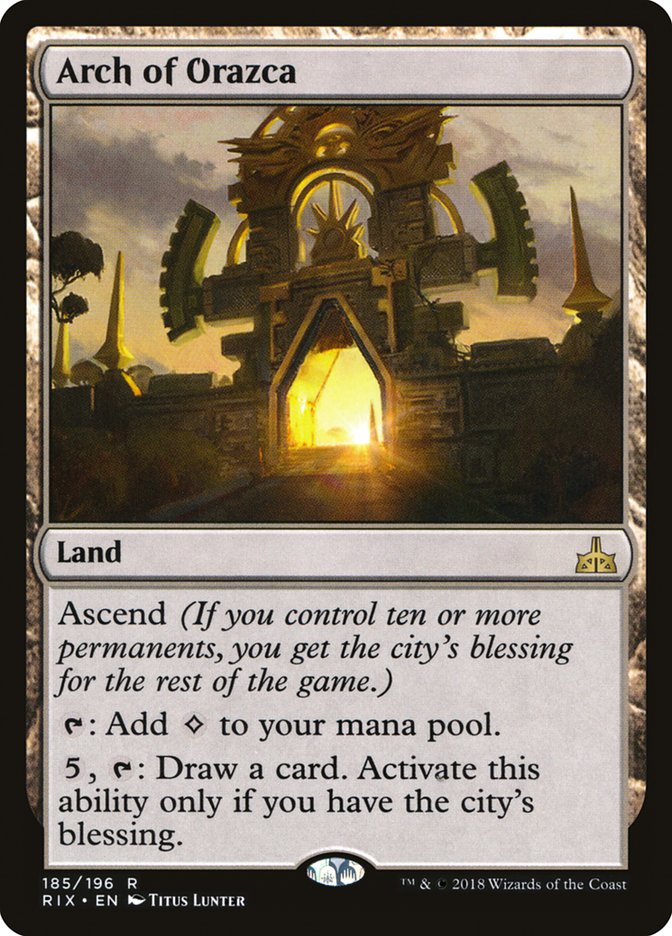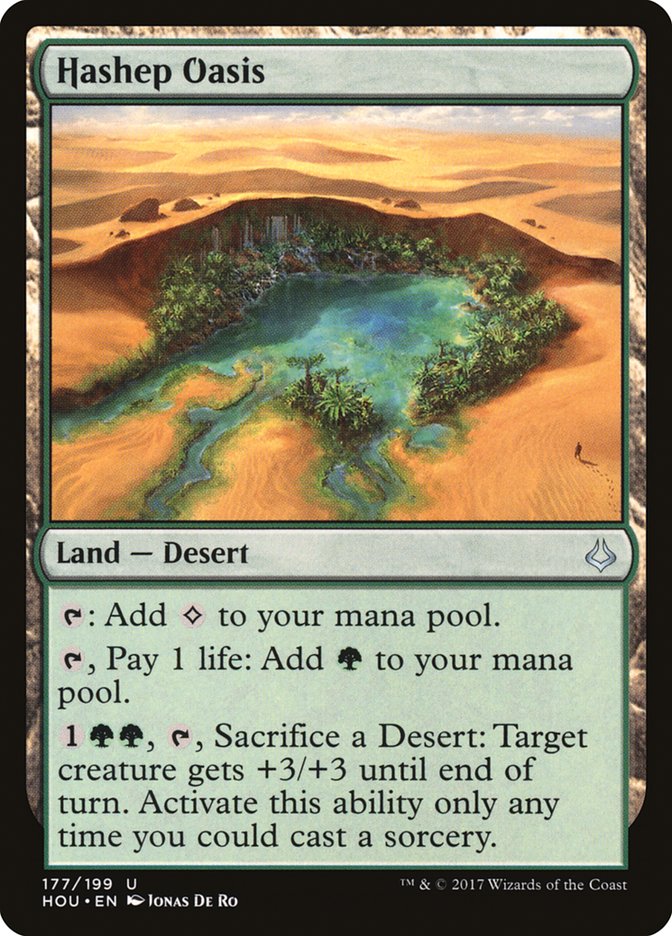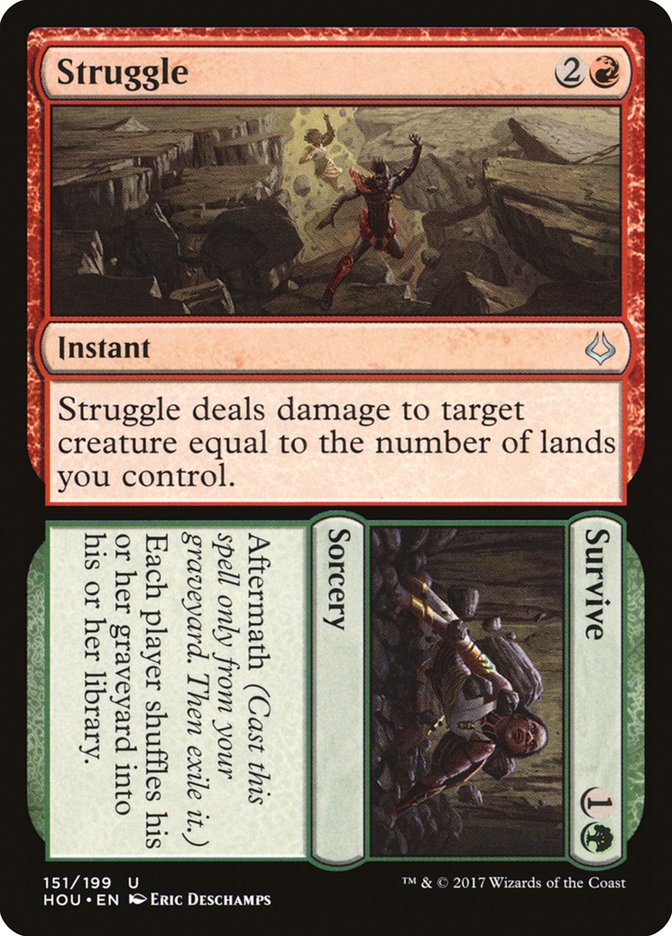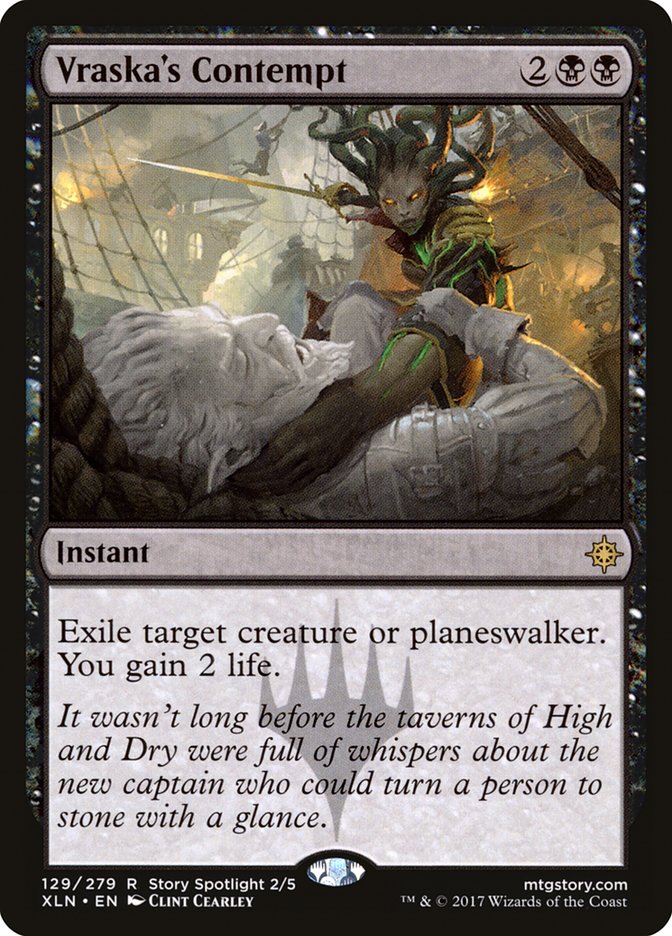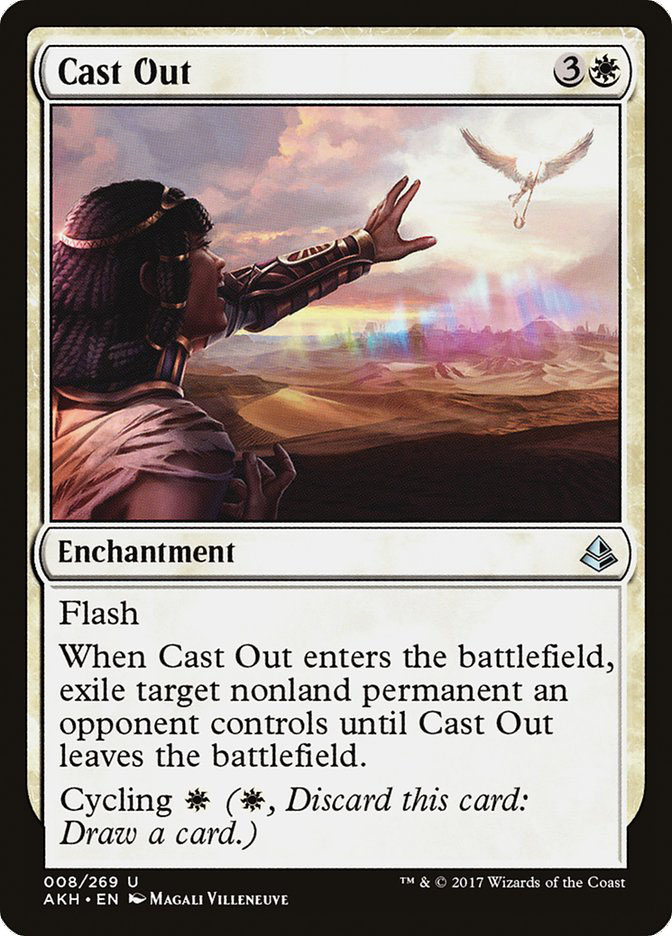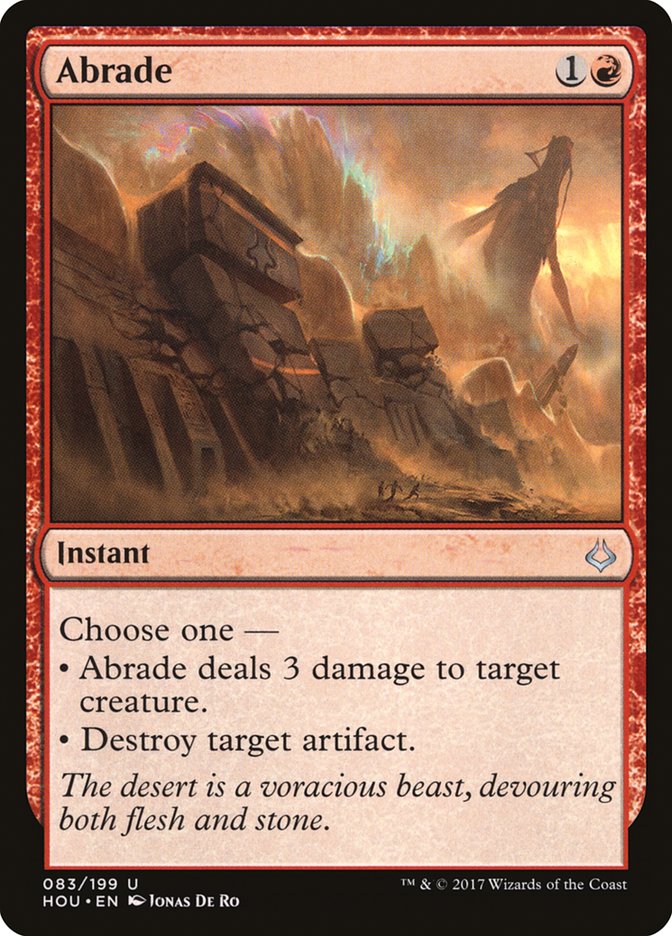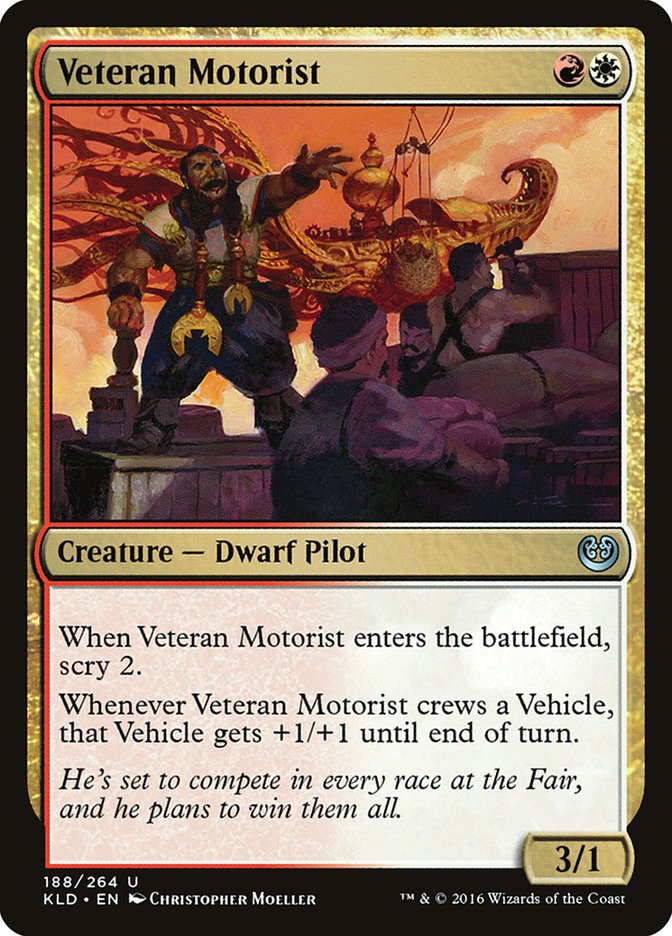After a week solid of testing Standard, I’ve finally reached the point
where I know things. Maybe not what 75 cards I’m registering this weekend,
but you know, other relevant things.
Like many recent Standard formats that weren’t “play a single unbeatable
deck or fail,” Rivals of Ixalan Standard is defined by a lot of
specific trends in threats, answers, and whatever other nonsense three
blocks have thrown at us. If I could distill what I’ve learned down to a
few key points, here they are:
1. The Scarab God and Glorybringer sit at the top of the
format.
There are a lot of individually powerful cards in this Standard format.
Once you hit about four mana, you reach the point where all the playable
cards are just runaway game-ending threats, bar a couple oddballs that are
solely rooted in value, like Ravenous Chupacabra or Gonti, Lord of Luxury.
At the top of this stack are The Scarab God and Glorybringer. Everything
else has some external limit. You can attack down Chandra, Torch of
Defiance or even Vraska, Relic Seeker with some extra work. Rekindling
Phoenix, Verdurous Gearhulk, and Hazoret the Fervent are still just one
creature. The card advantage from the one-shot value cards is recoverable.
You can sideboard answers and crush Anointed Procession, or in the case of
God-Pharaoh’s Gift, just play Abrade.
The only way to rectify against The Scarab God or Glorybringer is kill them
immediately. Glorybringer’s window to kill it and not be behind is a bit
shorter, as in literally between the main phase and declare attackers, but
The Scarab God is slightly more rapidly crushing once it gets going. Not to
say that Glorybringer going Stormbreath Dragon and just dealing four to
your face every turn isn’t also a fast option to close some games, but The
Scarab God plus untap step is basically the Splinter Twin–Deceiver Exarch
of 2018.
Both cards are super messed up, and unless you are playing one or both of
them you have to work really, really hard to do anything that approximates
their power level. This is why I’m skeptical of decks like Merfolk, G/W
Aggro, and Vampires. This is the same dance we saw with Archangel Avacyn,
with Ishkanah, Grafwidow, with Siege Rhino and Elspeth, Sun’s Champion.
Unless your deck is ultra-consistent at doing something synergistic
quickly, you are going to have games where you try to curve Adorned Pouncer
into Jadelight Ranger into something and you just get matched up the curve.
Then turn 5 hits, you aren’t ahead, and whatever unbeatable five-drop they
cast is literally better than your entire hand and deck. Maybe something
exists that does that, but I don’t think anyone has found it yet.
2. Two- and three-drops exist to support your higher
drops.
None of the two- or three-drops in the format really comes close to
competing with the four- and five-drops on impact. More importantly, even
in the aggressive shells you aren’t reliably fast enough for it to matter.
Sometimes your Bomat Couriers and Earthshaker Khenras steal games, but just
as often your opponent matches you up the curve due to a lost die roll or a
slight hand mismatch.
Your two- and three-drops are simply tools for getting you to a profitable
situation for your four- and five-drops to win the game.
I think the best example of this is G/R Aggro. Your deck is just a
Rekindling Phoenix–Glorybringer pile. The low-drop package exists only to
hit your land drops on the way to those threats and give you stuff to do
when the top card of your deck on an explore trigger isn’t a land. In The
Scarab God decks, you are looking at Glint-Sleeve Siphoner and Champion of
Wits playing the consistency role while Gifted Aetherborn is just kinda
there to give you a bit of counter play to their early action so that The
Scarab God doesn’t land when you are dead on board.
The closest any two- or three-drop comes to being relevant on a macro-scale
is Drake Haven. Search for Azcanta is good too, but a little slow to get
going. I’m not quite sure if the rest of the U/W Cycling deck is playable
cards, but it does have something unique going for it.
3. Mono-Red isn’t a good aggro deck, it just needs aggro
cards.
At Pro Tour Hour of Devastation, Mono-Red was a good aggro deck.
Everyone had this preconceived notion that you could block on turn 2 and 3
with creatures that aren’t Whirler Virtuoso, and Mono-Red just laughed at
that.
Since then, people have figured it out. They just play low drops they want
to attack with if you don’t let them block. Also, losing Falkenrath Gorger
made your deck a million times worse at this. Turn 1 Soul-Scar Mage isn’t
actually clocking anyone.
Every single card in the Mono-Red deck serves a single purpose: do
something reasonable, but get out of the way so Hazoret the Fervent can
attack faster. Technically your opponent can die to Bomat Courier and
Earthshaker Khenra, but that is more of a failure on their part than a
success on yours.
This leads to a really weird tension with the sideboard big game plan. You
sometimes want these harder hitting cards, but once you load up on them the
rest of your deck is just kind of doing whatever and not fully supporting
that you have turned into the four- and five-drop deck. Or you are leaving
in a bunch of Hazorets and drawing hands where it isn’t doing anything
until turn 6 or 7.
Of course, Red keeps winning everything, so this probably isn’t an actual
issue. It’s just weird that the deck just exists this way.
Also, can we just talk about Sunscorched Desert? Why the heck are you still
playing four? I didn’t even want four when I had Ramunap Ruins, I just
wanted to cast my spells. Seventeen or eighteen Mountains is absolute
insanity to me. As much as I hate the phrase: have some respect for the
game, you need multiple red mana to empty your hand.
4. Allied mana is mostly better than enemy.
Banning Attune with Aether changed so much.
In the Attune with Aether world, enemy and wedge mana was way ahead of
allied colors. You just wanted to cast Attune with Aether on turn 1,
Longtusk Cub on turn 2, then Attune would have set you up with the untapped
land to land whatever three, four, or five-drop you cared about. Games with
early Attunes were so much better than games without it, and turn 1
Rootbound Crag was an easy way to not play turn 1 Attune with Aether.
When Attune with Aether got banned, it crippled enemy color mana. You get
four Botanical Sanctum before you are stooping to Woodland Stream. Neither
of those enters the battlefield untapped on turn 5 for The Scarab God and
both make your Drowned Catacomb enter the battlefield tapped. Honestly, it
almost banned two enemy dual lands by taking Aether Hub down a few notches
with it.
As much as I don’t think the Amonkhet cycling duals are great
cards, the basic land types on them really matter if you want to add a
third color. Having untapped Dragonskull Summits on turn 5 for your
Glorybringer is a game changer, or just untapped lands at any point. In
allied color trios like Grixis you get to play a bunch of them alongside a
bunch of Drowned Catacombs that cast your five-drops on turn 5.
Brad’s Sultai deck gets away with wedge colors because it is just U/B with
one green six-drop that was already playing Aether Hub for Glint-Sleeve
Siphoner. That’s the level of wedge colors you can get away with now. Or a
full on aggro deck with most of its one-drops in a single color, but we
will get to Mardu in a minute.
I will say that the Kaladesh fast lands casting turn 1 Magma Spray
or Fatal Push is the one thing they have going for them. Keep that in mind
when you are selecting a color set or what one-drop removal to fight red
with. For example, Magma Spray is going to be way more effective off
Grixis’s Spirebluff Canals than Fatal Push off Canyon Slough.
Also The Scarab God is an allied color card, so there’s that going for
them. As a second point on this, I think two color enemy mana is okay, but
let me know when you build the sweet U/R or W/R Glorybringer deck that
actually has a good card in it.
5. Value lands exist…at a high cost.
One thing about these 24 or 25 land midrange decks is that you can just
flood out. Everything is a two-for-one, but they aren’t Tireless Trackers
or Hangarback Walkers that can arbitrarily churn and scale. There’s a huge
difference between topdecking Jadelight Ranger and topdecking Rogue
Refiner. Even if you get the full three-for-one with Jadelight, none of
those are actual spells you are using your eighth land on, whereas Rogue
Refiner could draw you into a Glorybringer to slam down right now. Past
your sixth land, you aren’t really doing a lot with the extra cardboard on
the battlefield. Well, except activating The Scarab God, but I tend to
worry more about the other 57 cards in my deck being good as opposed to the
actual best possible card being greater.
There are a fair number of options for converting that extra resource into
something in the lands section of the format, but they are all just
awkward. Arch of Orazca asks a lot in terms of set up and delivers really
late, of the non-Ramunap Ruins Deserts only Shefet Dunes offers a
significant payoff and even then only in specific decks, and all of them
mess up your Dragonskull Summits. The cycling lands are okay, but offer
only a marginal payoff for what is actually a significant mana investment.
Creatures (20)
- 1 Gonti, Lord of Luxury
- 4 Glint-Sleeve Siphoner
- 4 Gifted Aetherborn
- 3 The Scarab God
- 3 Champion of Wits
- 1 Hostage Taker
- 2 Kitesail Freebooter
- 2 Ravenous Chupacabra
Planeswalkers (3)
Lands (26)
Spells (11)

There’s a reason Brad Nelson’s
Sultai Midrange deck is so heavy on Champion of Wits,
even if a 2/1 for three is a terrible baseline. It’s actually a lower
cost to preventing flood than trying to commit land slots.
6. Exile removal is in a weird balance.
My immediate top level conclusion about the format last week was
that removal that could exile creatures was a must have.
This is a pretty straightforward conclusion in a format of Gods,
eternalize, God-Pharaoh’s Gift, and whatever is going on with Rekindling
Phoenix.
You would think at some point things turn, and being a big “hard-to-kill”
threat would turn the format into clunky exploitable removal that you could
jam undercosted but Fatal Push’able threats into. But it just… hasn’t.

Part of this is all of the cheap threats are just two-for-ones, bar a few
specific cards like Toolcraft Exemplar and Winding Constrictor. This
results in people wanting to have excess exile removal to hammer everything
into the absolutely-removed-from-the-freaking-game-forever zone, but also
makes playing small creatures dumb. What are you playing that isn’t just
trading for Merfolk Branchwalker, isn’t getting blocked down by Whirler
Virtuoso tokens, or just isn’t getting Walking Ballista’ed into the ground?
The other reason is that inexpensive removal is still really good. Magma
Spray is a clean answer to people overloading your expensive exile answers
with cheap eternalize threats. Abrade covers so many things that it is
absurd and also does weird stuff like saving your Rekindling Phoenix from
an Ixalan’s Binding. And Fatal Push is just really darn good.
Oh yeah, you also have to just not die anyways to Mono-Red. Or just your
G/R opponent curving out under your threat with their random dorks, making
that Chandra, Torch of Defiance irrelevant. You do have to actually do
stuff early, and Mono-Red is good against blockers, so I guess it’s
removal.
So you end up in this weird equilibrium where everyone just has a bunch of
removal early and removal that hits the big threats, so you can’t just go
under the exile removal. This should be exploitable in a different way,
but…
7. Control only has the dead removal advantage in game
1s.
Lands (25)
Spells (35)
- 2 Essence Scatter
- 3 Fumigate
- 2 Cast Out
- 3 Approach of the Second Sun
- 4 Spring
- 3 Gift of Paradise
- 4 Hour of Promise
- 3 Settle the Wreckage
- 2 Search for Azcanta
- 3 Ixalan's Binding
- 3 Thaumatic Compass
- 3 Baffling End
Sideboard

I tried the Approach of the Second Suns decks because I forgot how much I
made fun of them in testing for the last Pro Tour. I even tried the cool
new Bant one.
All the problems it had before exist, possibly even worse.
If the tournament were thirty best of one matches and everyone else was
told this after submitting lists, I think there would be an argument for
playing Approach Control. You do a lot of stuff on completely different
axes than your opponents are prepared for.
Then they sideboard, and they just cast some big unbeatable threat every
turn. If you misalign on one card or miss a land drop or even just mulligan
and end up down a card, you die. When they Naturalize your Cast Out, you
die. When they draw Negate, you die. Approach of the Second Suns has all
the “this takes eight physical cards to cast” issues Scapeshift does in
Modern, meaning you can’t reliably keep pace with answers and lands up the
curve to cast it in the face of dedicated threats, and your alternate win
conditions just aren’t good enough. You aren’t beating Sultai with Regal
Caracals.
Every single match comes down to 2-1 in one direction, and usually it isn’t
good for you.
Have you ever just had Settle the Wreckage and known your opponent has
Negate? It is actually the worst part of Magic. Well, guess I gotta make
this exact play because I have no other good options, only I know I’m 100%
to die and I just have to hope that every single signal they gave off this
game was a megabluff. And then you lose. People have just started building
their decks knowing people are trying to get you with this card. This isn’t Ixalan Limited; playing around it is actually something you can do
successfully.
8. Heart of Kiran’s time has passed.
Creatures (21)
- 1 Depala, Pilot Exemplar
- 2 Pia Nalaar
- 3 Bomat Courier
- 4 Scrapheap Scrounger
- 4 Toolcraft Exemplar
- 4 Veteran Motorist
- 3 Hazoret the Fervent
Planeswalkers (1)
Lands (23)
Spells (15)

If I could convince myself it was close to right, I would love to take a
Mardu vacation in Standard. Aether Revolt may have been the era of
infinite Cats for a lot of people, but I really fondly remember being able
to sleeve up my deck, write down a sideboard plan, then literally put zero
thought into my actions from when I woke up until when I ordered dinner.
The cards all said they couldn’t block, so you attacked, and the lands all
told you the order to play them untapped on the card, and occasionally they
did something super scary and you blew it up.
That is a thing of the past. Part of this is because Hazoret is a really
complicated card compared to Gideon, Ally of Zendikar, part of this is
opposing decks doing more things you have to worry about over a given game,
and the biggest part is Mardu just isn’t that good any more.
A big problem is that Heart of Kiran got really bad. Veteran Motorist was
never the best Magic card, but now everyone has these 2/1 cantrips on the
battlefield that you can never attack into. Even if you draw Heart of Kiran
and Scrapheap Scrounger, they can just Abrade it whenever is convenient for
them. Their top end threat isn’t a planeswalker that Heart threatens or
some assembly required contraption that you can beat by killing the Winding
Constrictor then handling the 8/8 trample Verdurous Gearhulk. It’s just The
Scarab God and you lose.
If you really, really have it in your heart to keep trying to Mardu people,
I would advise trying the one variant I enjoyed in Ixalan Standard
testing. When all else fails, try to hit them harder. I had some success
with a very aggressive version of Mardu that eschewed Pia Nalaar and most
of Fatal Push and Abrade for Ahn-Crop Crasher and Lightning Strike, making
it easier to get them into range of your eight ways to face them for three.
I think this means you have to dedicate a lot more of your sideboard to
even have a hope of beating Mono-Red, but at least you are getting closer
to doing something functional.
Or you could just play Mono-Red splashing Scrapheap Scrounger like some
people are doing and get most of the benefit of Mardu without any big cost.
Or just play Mono-Red, because, you know, it wins a lot.
Overall, I’ve really enjoyed playing this Standard format. It feels like
there are a ton of options left to explore, and importantly, it feels like
a bit of weird stuff is seeping into what has become modern day Standard.
The format is still defined by how the removal lines up against whatever
the best midrange threats are, but you can do weird stuff. There’s Anointed
Procession and Drake Haven. I’ve played against multiple different
Inspiring Statuary decks, multiple Oketra’s Monument decks, and even
Oketra’s Monument with Inspiring Statuary. The B/G Hour of Promise deck (
#10 in Gerry’s Ten Things last Friday
) plays like someone took a deck from 2002 with Cabal Coffers or Eternal
Dragon and decided it was still cool to use it in 2018.
If Standard stays like this for a while, I certainly wouldn’t mind it.




